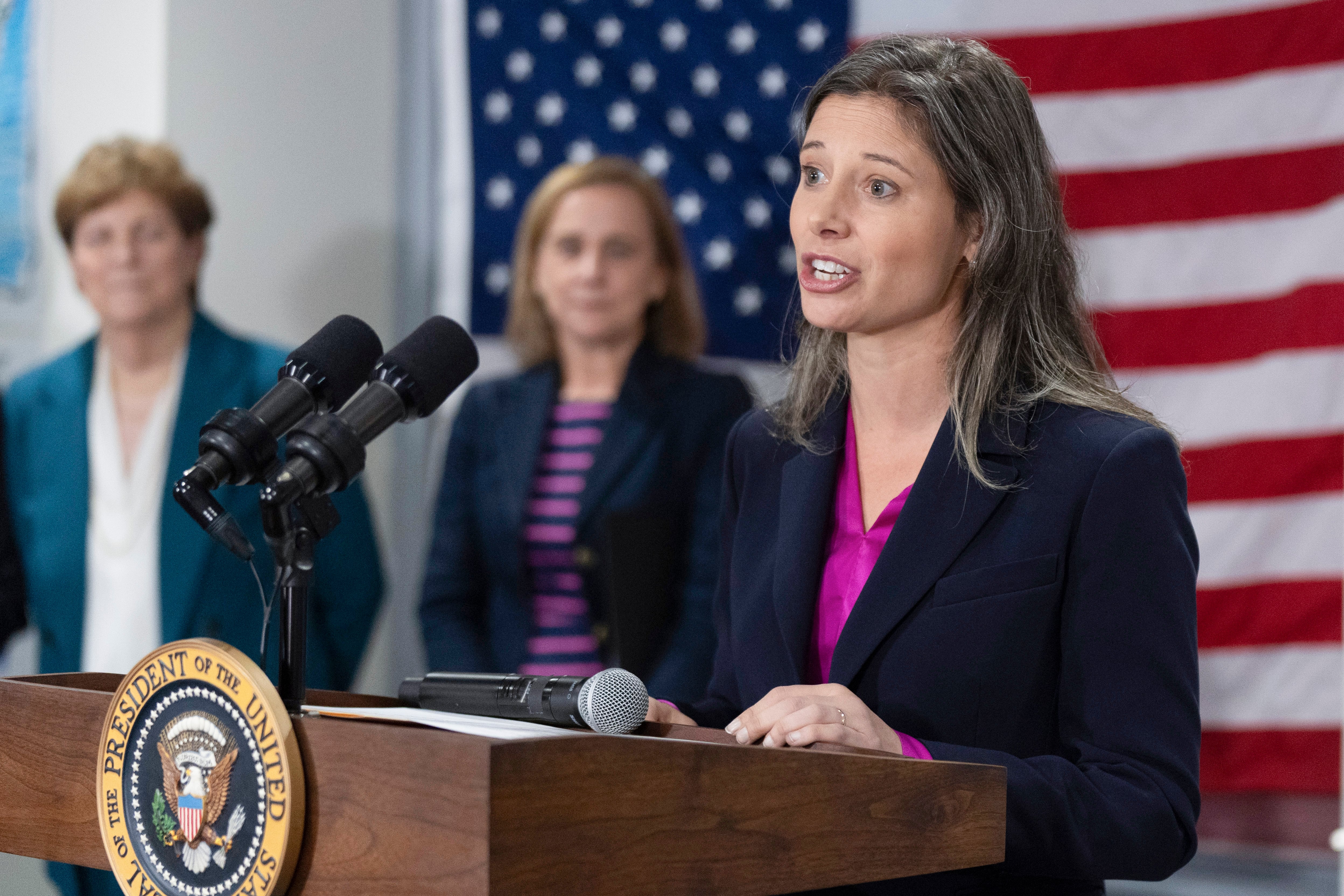Two years ago, Lt. Cmdr. Ben Kohlmann was the young face of Navy innovation. As a founding member of the Chief of Naval Operations' Rapid Innovation Cell (CRIC), Kohlmann and his teammates were at the forefront of a few programs you've probably heard of, like 3D printing and the GhostSwimmer fish robot.
Despite that success, the F/A-18F Super Hornet pilot is hanging up his flight suit and heading to business school this fall, tired of the Navy's promotion assembly line.
"Once you've tasted freedom, it's very hard to go back," he said of his time with CRIC, an eight-month break from the aviation officer pipeline he feels he's been chained to.
Now assigned to a Navy Reserve Office of Naval Research billet and preparing to start a master of business administration program at Stanford University this fall, Kohlmann told Navy Times in an Aug. 7 interview that the restrictive officer track is what compelled him to get out.
The irony isn't lost on him that this year, Chief of Naval Personnel Vice Adm. Bill Moran and Navy Secretary Ray Mabus announced the impending end of year groups, which hem officers into a rigid career track from ensign to admiral.
For an aviator, that means stints flying and leading squadrons at sea mixed in with staff and Pentagon tours.
"I would've loved to have been a squadron commander, [carrier air group commander] — those would have been phenomenal jobs," said Kohlmann, who is 33. "But then you have those one- or two-year chunks of time where I was super happy, and then have to deal with those five- to six-year chunks of time where I was just doing it to get to those small chunks of time."
Disrupting the system
Kohlmann is known for helping to get the first 3D printer on a ship, as well as co-authoring Cmdr. Guy Snodgrass's controversial 2014 Navy Retention Study, an unofficial survey that found low morale and widespread distrust of the brass.
The seeds of his reasons for leaving were foretold in essays titled "A Modern Military Needs to Embrace Modern Standards of Innovation" and "The Ultimate 360-Degree Evaluation," co-authored by Snodgrass.
"It's very difficult for a military junior officer in particular to send any ideas forward simply because there's eight or nine levels of bureaucracy that at any given point can say no," Kohlmann said.
He grew up in Minnesota, watching the World War II movie "Midway" on a weekly basis and dreaming of flying planes like his grandfather, an A-7 Corsair veteran. After earning his commission in 2004 through ROTC at Northwestern University, he went into the aviation training pipeline and was selected to fly strike fighters.
He did his first sea tour with Strike Fighter Squadron 141 from 2008 to 2011, then was assigned to a Marine Corps training squadron in San Diego when he first heard about CRIC.
Then in its first cycle, the group of junior officers are able to take innovative ideas and fast-track them with time and resources to the fleet.
Kohlmann's "Print the Fleet" initiative, to get a 3D printer on a ship, was one of these ideas. The GhostSwimmer, also known as the "robotuna" unmanned underwater vehicle, also came out of that first CRIC class.
"Where once you were an outlier — maybe an individual in a squadron who had a good idea, but no outlet — all of the sudden, you're instantaneously connected with a group of like-minded folks from throughout the fleet," he said.
He was able to meet others with the same attitude toward innovation, and get out of what he called his "very strike fighter-centric view of the world."
But that taste of the outside world changed him, he said. CRIC is its own world, but it's just a set of orders, so once you're back in the fleet, you're back to the old way of doing things.
"There was this, as I saw it, unwillingness to challenge the status quo. Or really, just a lack of curiosity as to why you'd want to do that in the first place," he said of his experience trying to effect change at the squadron level. " 'The way we've always done things has worked up to this point, why rock the boat now?' "
Roadblocks to innovation
After CRIC, Kohlmann moved to the East Coast to write speeches for Adm. Bill Gortney, then head of Fleet Forces Command, and his successor Adm. Phil Davidson.
At that point, having veered from the traditional aviator track, he decided to take his chances on the outside. He does, however, have some advice for the Navy to keep its innovators around: Promote outside of year groups. Offer a market-based detail system. Allow more flexibility in career paths. Add diverse graduate school and industry opportunities. And promote folks who have shown leadership in the crucible of combat.
The Navy is working on several of these ideas now.
SECNAV has said year groups will be gone by 2017, allowing officers to compete for promotions based on what they've done rather than the billets they've held.
Kohlmann suggested taking it a step further, making some key staff billets tied to rank.
"If you run a successful CRIC project, if this were an Apple or Google, you would be promoted well beyond where you would normally be promoted," he said. "But in the military you've got to wait your turn. There is no mechanism to identify and truly rapidly promote promising talent."
"In my ideal world, you have billets tied to ranks, and you interview for billets. If you get selected, you're spot-promoted," he added. "That's how you create a talent-based promotion system."
There are also more opportunities for officers to go away for graduate school and bring their knowledge back to the fleet.
Or, through the soon-to-be launched SECNAV industry tours, mid-grade officers will be able to spend two years at a Fortune 500 company.
Kohlmann said that while he sees promise in these initiatives, he decided to leave active duty and pursue an entrepreneurial path because it made the most sense for his situation.
He doesn't, however, encourage junior officers to throw up their hands in general.
For those he leaves behind, he said, he hopes they take opportunities to do something new and different.
"I think it's critical that we have creative, talented, focused individuals who want to serve," he said. "I would just tell them, if you see something wrong, take action. Don't be afraid to write things down, build coalitions.
"It's amazing what can happen when you get three or four people behind you, find the right mentors, and the seas just part in front of you."
Meghann Myers is the Pentagon bureau chief at Military Times. She covers operations, policy, personnel, leadership and other issues affecting service members.





